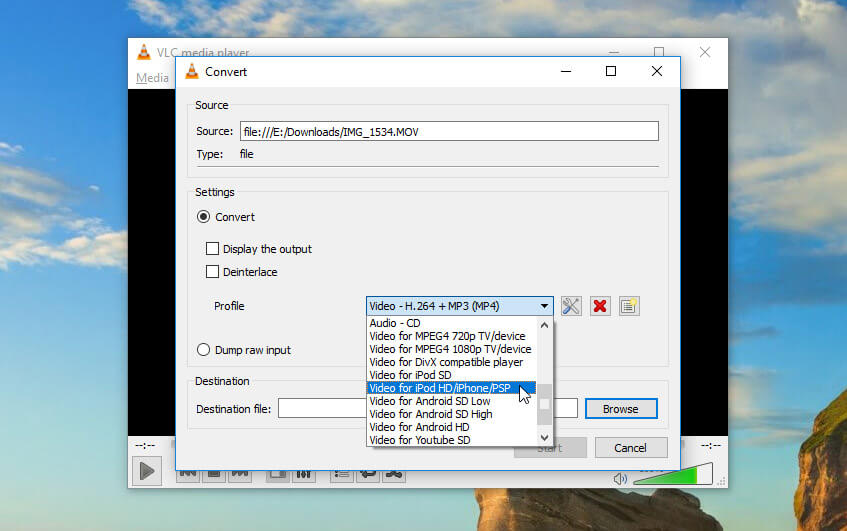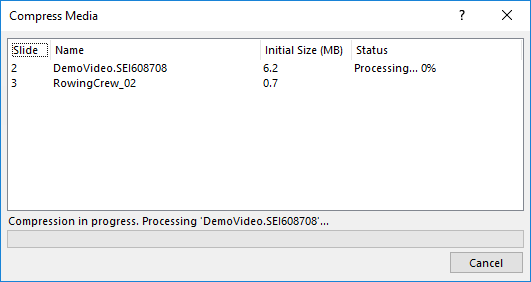
- VIDEO SIZE COMPRESSOR FOR MAC HOW TO
- VIDEO SIZE COMPRESSOR FOR MAC MOVIE
- VIDEO SIZE COMPRESSOR FOR MAC SOFTWARE
- VIDEO SIZE COMPRESSOR FOR MAC PLUS
This opens a new compression setting into the Inspector, where we can customize it.īefore you do anything else, give your new compression setting a name and description.
VIDEO SIZE COMPRESSOR FOR MAC PLUS
To create your own compression setting, click the Plus button in the top right corner of the Settings window.įor web video today, the best option for compression is MPEG-4, so select that.

(I list where to find these articles at the end of this article.)
VIDEO SIZE COMPRESSOR FOR MAC HOW TO
I’ve already written about how to change frame rates, add watermarks and other effects, and how to change image sizes.

In this article, I’ll explain how to create a basic compression preset. To apply a preset to the clip, drag the preset from the Settings window and drop it on top of the video in the task bar.Īt this point, you can skip down in this article to “Geometry Tab.” For example, enter “iphone” in the search box at the top of the Settings window and the three Apple presets for the iphone appear. There is nothing wrong with using a preset and its a great way to get started. The easiest way to compress a video is to work with one of Apple’s settings. The Preview window allows us to view the video, set an In or out to compress only a range of the video, review or add markers, and, in general, make sure that the file we are compressing is the file that we actually WANT to compress.
VIDEO SIZE COMPRESSOR FOR MAC MOVIE
Once the file is added, select the task tile (the rounded rectangle containing the small image of the video) to display the movie in the Preview window. (You can add as many files at a time as you want.)

To add a file for compression, click Add File in the top left corner. The Compressor interface consists of five windows, starting in the top left and rotating clockwise: I’m going to illustrate this process using Compressor 4.
VIDEO SIZE COMPRESSOR FOR MAC SOFTWARE
Whether you are running Compressor 4, Compressor 3, Telestream Episode, Sorenson Squeeze, or any other compression software these settings, and their rationale, remain the same. Strange, but true.Īlso, within reason, the frame size, frame rate, or codec of the source image doesn’t matter as much as the final, compressed frame size, frame rate or codec For example, the file size, in bytes, of the source file really doesn’t matter. Whether your source files is 20 GB or 200 GB doesn’t matter when you are compressing the file. Several factors that you think might affect final image quality or file size really don’t matter. The larger the frame size, the faster the frame rate, or the more movement between frames, the higher the bit rate necessary to preserve overall quality.įor example, a 320 x 240 still image can be compressed to virtually nothing, while a 1920 x 1080, 60 frames per second handheld dance video is gonna be huge, no matter what you do. Image quality is based upon balancing the bit rate against the final compressed frame size, frame rate, and the amount of movement from one frame to the next. By far, the most popular codec today is H.264, which is often called MPEG-4. For example, MPEG-2 requires higher bit rates than MPEG-4 in order to achieve the same level of quality.ĭEFINITION: Codec (COmpressor/DECompressor) is the mathematics that the computer uses to convert analog light and sound into a form that the computer can record, store, and playback.
The choice of codec also influences bit rate settings. However, such a low bit rate totally destroys the image. A bit rate of 1 creates a phenomenally small file. The lower the bit rate, the smaller the file. This is a constant balancing act and no one compression setting works perfectly for all files.įile size is totally and completely dependent upon compression bit rate. So, the goal in video compression is to make the file as small as possible, while keeping image (and audio) quality as high as possible. Whenever data is removed, image quality suffers. Whenever we compress something, we need to remove image and audio data in order to make the resulting file smaller. We compress video for the web because uncompressed video is far too big to download. Click here for my most recent video compression webinar. NOTE: I’ve done a lot of webinars on video compression, but recently discovered I haven’t written a basic tutorial article covering video compression for the web. Posted on Jby Larry Compressor 4: Compress Video for Web


 0 kommentar(er)
0 kommentar(er)
